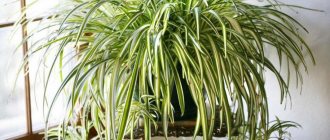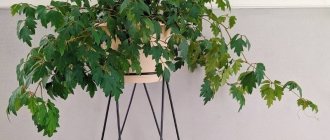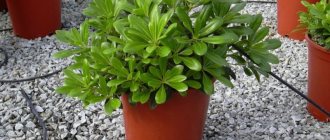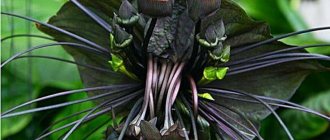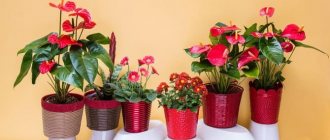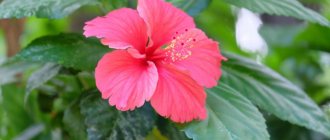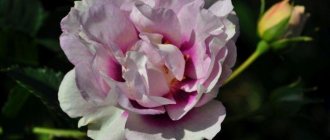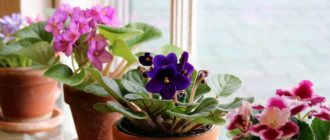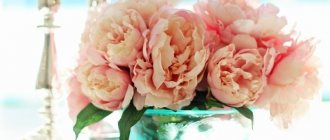Aloe - home pharmacy
This houseplant, a succulent, is loved by many gardeners for the healing properties of the juice of its leaves. The juicy pulp of aloe leaves can be used to treat a runny nose. The unpretentious plant also has wound-healing and anti-inflammatory properties. For medicinal purposes, it is necessary to use specimens that have reached three years of age.
- Aloe is easy to grow because it does not require spraying.
- Aloe needs to be watered once a week in the summer and no more than 2 times a month in the winter months.
- This low-maintenance houseplant grows well on a windowsill, however, it must be protected from direct sunlight.
The most unpretentious house plants
Ornamental foliage plants are a large group of indoor plants that are valued for the beautiful and unusual appearance of their leaves. These plants look great at any time of the year, and not just during the flowering period, like decorative flowers.
Among the deciduous species there are many very beautiful and at the same time unpretentious ones that even an inexperienced gardener can grow. Let's look at unpretentious indoor plants for the lazy with their names, descriptions and photos.
Coleus
A very bright, colorful and unpretentious plant for an apartment. It has a straight stem with numerous shoots on which amazingly beautifully colored leaves grow. There are many varieties of this species, the colors of which are very diverse.
Their leaves come in light green, white, yellow, pink, red and burgundy shades. The two-color and three-color varieties are especially beautiful. Coleus blooms with inconspicuous bluish flowers. It is recommended to remove the peduncle so that the plant does not lose its decorative appearance.
Pandanus
Pandanus is called the screw palm because of its external resemblance to palm trees. However, they are not related species at all. Young pandanus resembles rosette herbaceous plants. Its long leaves form a dense rosette.
Over time, the old leaves dry out and expose the emerging plant trunk. It shows numerous aerial roots that go into the ground or serve as a support for the flower. Pandanus is very unpretentious and can withstand prolonged drying out of the soil.
Reo
An unpretentious, fairly large green indoor plant that forms a branched bush. Its powerful shoots do not reach significant length and branch easily. The leaves do not exceed 15 cm in length and have a width of up to 3 cm.
In the natural variety, their surface is painted an intense green color, and the reverse side is bright burgundy. Numerous varieties are variegated; stripes of white, cream and pink shades can be seen on their leaves. The plant is very unpretentious in terms of watering, lighting and soil composition.
Tradescantia
This is an easy-to-care home plant, very popular for its undemanding nature and beautiful appearance. Tradescantia is grown as an ampelous plant, the shoots of which beautifully hang from pots on hangers or shelves.
The branches of the plant are densely covered with small elongated leaves with a pointed tip. The color of the leaf blades of different types of Tradescantia is very different. There are varieties with bright green and burgundy leaves, as well as variegated varieties with silver and reddish stripes.
Ficus benjamina
Ficus Benjamina is a small-leaved variety of ficus. In nature it reaches a height of more than 6 m, and in a room it usually does not exceed 1 m in height. There are also dwarf varieties up to 50 cm in height. This tree naturally grows in many climate zones and can withstand direct sun, strong winds, and dry soil. This low-maintenance indoor plant is easily propagated by cuttings. Many variegated forms of Ficus Benjamin have been developed.
Chlorophytum
This is one of the most undemanding indoor plants. Its stem is greatly shortened, so that the flower looks like a lush rosette of very long leaves. Chlorophytum leaves may be green or have white stripes depending on the variety.
The plant is easily propagated by daughter specimens formed on the tendrils. Chlorophytum grows well in any apartment conditions. It is undemanding to soil composition and air humidity, and survives even with poor watering.
Cissus
Cissus or Antarctic grape is a shade-loving and unpretentious indoor plant. Its long shoots branch well and can green up a room in a short time. It does not require good lighting, so it grows well even in the most shaded parts of the room.
The pot with the plant can be placed high on the cabinet so that its vines hang down beautifully. It is also widely used in vertical gardening. Withstands grapes and dry soil. As a result, it may lose part of its leaf mass, which then, with good watering, grows back very quickly.
Chlorophytum - air purifier
Due to its rapid growth, attractive appearance and ability to purify the air from various impurities, chlorophytum is often used for landscaping an apartment. Due to the ability of an unpretentious flower to filter the air, it is most often placed in the kitchen.
- Caring for this indoor plant is very easy. It is enough to water moderately after the top layer of soil dries out and fertilize once a month from spring to autumn.
- In order for chlorophytum to grow lush, you need to provide it with good lighting.
- When the air becomes dry during the heating season, you need to increase the humidity by spraying.
- Transplantation must be done when the root system has grown greatly.
- With proper care, the unpretentious chlorophytum will definitely show itself in all its glory and will hang rosettes at the ends of the flower stalks, so it can be grown in hanging flowerpots.
Large, unpretentious indoor plants
Large indoor plants are a rather elegant decorative element. It is only at first glance that it seems that you will have to experience a lot of difficulties and troubles with them. In fact, among them there are completely unpretentious specimens.
Ficus benjamina
A very beautiful ornamental plant that can grow up to 2-2.5 meters at home . By its nature it is not at all pretentious. It is enough to provide it with good air circulation, while avoiding drafts.
Calamondin (citrofortunella)
Calamondin is not just an ornamental crop . This fruiting citrus tree is a hybrid of a tangerine and a kumquat. Loves moderate air temperature, humidity and fresh air. The plant does not tolerate changes in environment well, so it must be carefully monitored for several days after purchase.
Sansevieria
This flower is a succulent. It can grow even in the darkest corner of the house - the general environment will not affect its life in any way. The culture loves warmth, but, on the contrary, it does not respect moisture very much. The plant should be watered rarely, otherwise its roots will begin to rot.
Chinese hibiscus
Chinese rose is a very beautiful indoor flower . It can grow to impressive sizes, and its flowering will delight the eye with bright colors for a long time. The plant is not very capricious to care for:
- The crop should be watered only when the top layer of soil dries out.
- The optimal temperature for keeping a houseplant is 25 °C in the hot season and at least 17 °C in the cold season.
The plant does not require too frequent watering. Does not tolerate drafts and sudden temperature changes.
Philodendron
This tropical plant amazes with its impressive parameters, and most importantly, with its large, fleshy leaves. In order for him to fully develop, he needs additional support. What is required for cultivation:
- air temperature not less than 15 °C;
- diffuse lighting;
- moderate and not very frequent watering.
The crop needs to be sprayed periodically. Fertilizing also needs to be done from time to time so that the plant does not weaken.
Pelargonium - blooming splendor
Pelargonium or geranium combines a lot of advantages. The flower helps purify the air. Velvety pubescent foliage and caps of flowers in pastel, rich or combined shades make this unpretentious plant a real decoration for window sills.
- In the summer months, pelargonium feels great outdoors, so it can be used to decorate a balcony or terrace.
- The rich aroma of the leaves can repel insects, including moths, so the flower is not susceptible to pests.
- By following simple care rules, you can achieve abundant flowering.
- The plant requires good lighting.
- Pelargonium tolerates a lack of moisture better than excess.
- In summer, it is necessary to water it only after the top layer of soil has dried; in winter, watering is reduced to a minimum.
- After flowering and in early spring, you need to prune overgrown shoots to form a bush shape and promote lush flowering.
- Fertilizers have a beneficial effect on pelargonium, so they can be applied in the warm season.
Spathiphyllum - women's happiness
This flowering houseplant is believed to help one find happiness and love. Unpretentious “female happiness” is also valued for its beauty. Delicate green leaves in combination with white blankets of graceful flowers look very impressive and noble.
- This unpretentious indoor flower prefers diffused light and regular watering.
- Drooping foliage indicates a lack of moisture and rises immediately after watering.
- To keep the tips of the leaves from drying out, spraying is required.
- In the warm season, spathiphyllum needs to be fed once a month.
Decembrist - winter flower
Schlumbergera (Decembrist) is a representative of the cactus family, the peculiarity of which is flowering in winter, when many indoor plants are dormant. Many pink, white, red or purple flowers decorate the house for several weeks.
- For abundant flowering, Decembrist must be kept at low room temperatures.
- In summer, the plant requires abundant watering after the top layer of soil dries out, however, nothing will happen to it if you forget to water the Decembrist on time.
- The unpretentious plant tolerates direct rays of the sun if you gradually accustom it to it.
- Adult specimens are transplanted every 5 years.
Sansevieria - a favorite of several generations
Sansevieria, popularly called “mother-in-law’s tongue” or “pike tail,” was grown by our grandmothers. This unpretentious plant is popular with several generations at once.
There are both compact varieties and specimens reaching a meter in height. The dense, elongated leaves have a variegated color and a light edging along the outer edge. Sansevieria blooms in small inflorescences with a pronounced sweet aroma.
- This unpretentious indoor plant is suitable even for novice gardeners. It is comfortable both in partial shade and in bright sun, however, specimens growing in the back of the room lose their expressive color.
- The plant needs to be watered once a week, in winter - once every 2-3 weeks.
- Transplantation is performed when the flower becomes too crowded in the pot.
Indoor succulents
Succulents
Unpretentious house plants with the ability to accumulate water in their cells are called succulents. These flowers belong to different families, but have common characteristics:
- have high drought resistance;
- their natural habitat is deserts and semi-deserts;
- frequent watering is detrimental to them;
- on the stems (leaves) there is an edge or a thin waxy coating;
- the above-ground part dies off under critical drought conditions, but is restored immediately after the roots absorb moisture;
- The stems and leaves are elastic, which prevents them from bursting when the cells accumulate water.
Based on the location where water reserves accumulate, leaf and stem succulents are distinguished. Prominent representatives of the first subgroup are aloe, chavrotia, young, and kolanchoe. Stem succulents - carnegia, monzolia, cereus, lithops - have a fleshy stem and small leaves. Some unpretentious plants for the home have thorns instead of leaves.
Agave
Most types of leaf agave succulents lack a stem; the leaves are collected in a multi-row rosette. The indoor plant is not demanding on the composition of the soil. The only condition for its successful cultivation is a well-lit place, preferably on the windowsill of a south-facing window.
Agave in a pot
Water the flower every 10 days in warm weather. In winter - once a month. Agave does not tolerate spraying: water getting into the center of the rosette causes tissue rotting. Periodically it is necessary to clean its leaves from dust with a soft brush. Fertilizing is carried out in the summer every 2 weeks (with complex fertilizer for succulents).
Aloe
The unpretentious leaf succulent aloe (agagave) is a dense trunk with fleshy sword-shaped leaves. The edges of the leaf blades are jagged with sharp spines. The fleshy leaves are widely used in folk medicine for the preparation of medicines.
For the development of this indoor plant, you need a well-lit place with diffused light (direct rays of the sun burn the leaf blades). All aloe care consists of several activities:
- watering as the soil dries out;
- fertilizing once a month with fertilizer for succulents;
- annual transplant for the first 5 years. Aloe
Crassula
Money tree, Crassula are other names for Crassula. The flower grows up to 1 m tall. It has a thick, dense stem. Side shoots are formed in the form of a tree crown. They are strewn with fleshy leaves shaped like coins. The root system of the Crassula is fibrous and located close to the surface of the earth, so you need a not deep pot with a diameter slightly larger than the crown.
The best place for a flower is the window sill on the southeast side of the house. For normal development of Crassula, you need to moisten the soil once a week, and even less often in winter. Crassula is not picky about air temperature and ambient humidity. Pests rarely attack the Crassula. Fertilizing with mineral fertilizers for succulents is applied in spring and summer no more than once a month.
Crassula
Haworthia
Hard leaves with white specks are collected in a rosette. The stem is missing. Haworthia can easily go without watering for a week or more due to the moisture accumulated in the leaves. Succulents rarely get sick. The flower has short roots, so it thrives in shallow bowls with clay-turf soil with the addition of sand and brick chips. During the dormant period of the flower from October to March, it is required to water it once a month.
Haworthia
Lithops
Two fleshy leaves of exotic lithops fused at the bottom resemble pebbles. Between them, in some types of culture, a flower is formed. Basic measures for caring for lithops:
- keep on the southern windowsill in bowls;
- from March to October, water once every 10 days;
- in the fall, spray the soil with a spray bottle once every 2-3 weeks, and stop watering in the winter;
- feed in spring and summer with fertilizer for cacti;
- replant when the root system does not fit in the pot. Lithops
Cactus - record holder for survival
The cactus is rightfully one of the unpretentious indoor plants, since it, like all succulents, stores moisture and can survive for a long time without watering. Some cacti can thank the grower by producing beautiful flowers. Not every cactus blooms at home, and the duration of flowering is sometimes only one day, however, this does not detract from the decorative value of the plant.
- The plant does not require special care.
- The unpretentious cactus is not afraid of direct sunlight, so it can grow on a windowsill.
- In the shade the plant stretches out, so it is not recommended to place it in the back of the room.
- The flower is resistant to dry air and heat.
- An error in care can be excessive watering.
Top 10 most unpretentious indoor plants for home and office
Unpretentious plants survive well at any level of air humidity. In addition, they are not particularly affected by the degree of illumination of the room where they are located. The following varieties of flowers can easily adapt to almost any living conditions.
Monstera
Monstera is a plant with large reserve leaves . Belongs to the group of philodendrons. The flower can be placed in any corner of the room, even far from the light source - and it will still continue its life.
Zamioculcas
Zamioculcas is a succulent that can accumulate moisture in the vegetative mass or trunks . Main characteristics:
- Does not require frequent watering.
- Can go without water for a long time.
- Unpretentiousness to lighting or air humidity.
At the same time, the plant has a rather impressive appearance, so it is perfect for both home and office.
Dracaena
These indoor flowers prefer a room with a high level of humidity. But even if this is not provided to them, they will not die. Dracaenas are very hardy plants . The maximum that can happen to a flower due to lack of moisture is yellowing of the tips of its leaves.
Hovea
Howea is a herbaceous palm . Culture is one of the most favorite office plants among gardeners, although it is also perfect for landscaping at home. The plant has such an attractive appearance that it can decorate any corner of the room. And if you hang a flowerpot with it above a sofa or armchair, you will get a cozy place for relaxation.
Bamboo
Bamboo is highly resistant to cold air and drafts, but:
- It needs a lot of diffused light.
- It needs regular watering.
- The plant does not tolerate drought and space.
Otherwise, indoor bamboo is unpretentious and easily adapts to new living conditions.
Chlorophytum
For an office worker who does not have a lot of free time to care for ornamental plants in the office, chlorophytum is perfect. This flower grows and develops in any conditions.
For chlorophytum, the optimal temperature is 18 °C, and the frequency of watering does not matter, as does air humidity. You can also feed the plant infrequently.
Dieffenbachia
This is an unusually beautiful plant, whose homeland is considered to be the tropical part of America. The flower does not tolerate heat and bright light, so it cannot be placed on a windowsill on the south side. Also, do not expose it to drafts and temperatures below 15 °C or above 25 °C.
Aloe
The most classic option is aloe. Growing it on a windowsill is very simple; the flower does not require special care. In addition to its attractive appearance, the plant also has many beneficial properties. And you can keep it not only in an apartment, but also in an office space.
Also read: Myrtle - a tree of peace and love on your window
Crassula
Crassula, Crassula, money tree - these are all names of one plant. This is not only an unpretentious flower, but also a “magnet” for attracting money, good luck and prosperity. Of course, according to Feng Shui experts . The plant does not require special care; it is unpretentious to watering and air humidity.
Tradiscantia
An ideal “indoor flower for the lazy,” as it can survive even in extreme conditions. Tradiscantia is an ampelous plant with beautiful bright leaves. Tolerates both low and high temperatures, but needs good lighting. Without it, the plant will not die, but will lose its decorative appearance. Moreover, the plant tolerates even the most serious mistakes in care, and can do without it for a long time . It reproduces very well. Place the branches in water, and after 10 days they will sprout roots.
Violets - compact home decorations
Usambara violet or Saintpaulia is found among many gardeners. The rich palette of shades and shapes, regular flowering, fleshy foliage and compactness of these unpretentious indoor plants ensure their popularity.
- Flower care is minimal.
- The fluffy leaves of violets must be protected from moisture and bright rays of the sun.
- Since the plant cannot be sprayed, in hot weather and the heating season it is not a bad idea to provide comfortable humidity in the room.
- In summer, the flower needs to be watered 2 times a week, in winter - much less often.
- Violets need to be fed once every two weeks.
How to grow
To cultivate the plant in water, you will need cuttings. To do this, you need to cut off a young branch from an adult plant. The cut line should be at the junction of the leaf and the stem. It is advisable that the cuttings have 2-3 leaves.
They have money and power: types of men prone to cheating in relationships
Pleated and print: how and with what to wear basic skirts in the warm season
“Coronavirus” benefits that will be canceled in the Russian Federation on April 1 have been named
You can take a regular glass jar or bottle. Vessels made of dark glass are ideal as they do not form algae. Metal containers should not be used for water growing. They can rust and damage the cuttings.
Fill the vessel three-quarters full with regular tap water. It does not need to be boiled or settled beforehand. Dip the cutting into water. After some time it will begin to take root.
At first, you need to make sure that the plant has enough water. If it evaporates, add liquid. Once the cutting takes root, change the water once a month.
Monstera - a luxurious vine
A large decorative foliage plant looks impressive in spacious rooms. There are varieties with plain and variegated colors. The leaves can reach a meter in length, and the slots on them give the plant an attractive appearance.
- The unpretentious monstera is sensitive to watering and temperature. Plant growth stops if the thermometer drops to 12 degrees. The optimal temperature is about 20-23 degrees.
- You do not need to water the plant often, waiting until the top layer of soil dries. In winter, watering is reduced to once a week or even twice a month.
- With a lack of light, new leaves become smaller, and the slots on them may stop appearing altogether, so it is better to provide bright, diffused lighting.
Monstera is a climbing plant, so its stem may require additional support.
Hoya - exquisite ivy
Wax ivy is an unpretentious creeping plant with small inflorescences that emit a sweet aroma. The flowers produce nectar, which is why hoya is also called the “weeping vine.” Dense glossy leaves, a variety of colors, regular flowering and ease of care are the main advantages of hoya.
- The indoor plant feels comfortable on a windowsill flooded with sunlight and is not afraid of temperature changes.
- In summer, the unpretentious flower needs increased watering, however, a short lack of moisture does not harm it.
- Hoya planted in a tight pot blooms more profusely.
- During flowering, you should not turn the plant around or move it, otherwise the flower may drop its buds.
- There is no need to trim off the faded shoots - it is on them that new inflorescences will appear in the future.
Arctotis
The literal translation of the name of this plant from Greek means “bear's ear.” Probably, the flower of this plant reminded the ancient Greeks of the ear of this particular formidable beast. Arctotis comes from South Africa, and this has shaped its unpretentious nature in terms of soil composition. In our latitudes, arctotis is grown as an annual plant.
Arctotis flowers are shaped like gerberas and, admittedly, are not inferior to them in the variety of petal colors. Please note that this summer plant does not tolerate fresh organic fertilizers. The plant reaches an average height of 25 cm and blooms from July to September.
Ficus - variety of colors and sizes
All ficus trees are decorative in their own way. There are monochromatic and variegated species, compact bush-like specimens, and tall trees with elastic leaves.
- To place an unpretentious ficus, it is better to choose a place with diffused light.
- Moving a houseplant from one place to another is not recommended.
- Ficus loves high humidity, so it needs to be sprayed at least during the heating season.
- Due to too much or insufficient watering, the ficus can shed its leaves, so it is necessary to monitor the condition of the top layer of the earthen clod and water it after it dries.
- To form a crown in the spring, the flower requires pruning.
Red skerda
In some sources this plant is found under the name red crepis. Yellow-colored species can easily be confused with dandelions due to the similarity in flower shape. The petals of the red skerda are painted in a soft pink color, turning into crimson towards the center, which makes this species stand out among its fellows.
Red skerda, although unpretentious, does not like excessive humidity. At the same time, in order to prolong flowering (begins in mid-June), the plant needs to be watered in dry weather. For the same purpose, the annual plant is fed 2-3 times per season with any complex fertilizer. Plant height – up to 20 cm.
Hibiscus - flowering shrub
The woody stem and branches of the Chinese rose transform this indoor plant into a spectacular bush that amazes with its large flowers in shades of red, peach, pink or white. Single flowers bloom for only one day, but in the warm season the flowering is continuous, so the owner of the plant has time to enjoy its beauty.
- Unpretentious hibiscus is not picky about its placement, but abundant flowering can only be achieved in the light.
- Flowering is favorably affected by temperature - in the cold season it should be about 18 degrees.
- Formative pruning is performed in early spring.
- Fertilizers must be applied monthly in the spring and autumn.
Zamioculcas - dollar tree
Branches with glossy leaves are formed from tubers located in the ground. A waxy coating protects the indoor plant from drying out, so Zamioculcas accumulates moisture.
- This easy-to-care flower can be grown in the shade, but with sufficient lighting it develops faster and does not stretch.
- To prevent the roots from rotting, watering should be moderate.
- Zamioculcas does not respond to changes in air humidity, so it does not need spraying.
- This indoor flower is characterized by slow growth, which can be accelerated by feeding cacti twice a month.
- Since the sap of the plant is poisonous, zamioculcas should be placed out of the reach of children, and replanting work should be done with gloves.
Indoor plants for dark rooms
Not all indoor plants are light-loving. There are also those who feel great in shaded rooms, and even cannot tolerate too bright colors. In this case, you can choose the appropriate option from the following list of indoor flowers.
Begonia
There are more than 100 varieties of begonia. Each of them is good in its own way, but tuberous and root varieties of the crop are used to decorate rooms and office spaces. This flower:
- Tolerant to growing conditions.
- Feels good in the shade.
- Does not require frequent watering.
Begonia is perfect for beginner gardeners.
Spathiphyllum
Popularly called “female happiness,” this is a beautiful decorative indoor plant with white flowers. It does not require specific care and grows well in the shade, but it loves moisture, so the soil should not be allowed to dry out. The optimal humidity for spathiphyllum is 50% and above.
Also read: Dracaena - home palm tree, popular types and care
Freezea
Quite a bright, extraordinary plant from the Bromeliad genus. It has a colorful peduncle, shaped like the feather of a fairy-tale firebird. The plant blooms in partial shade, but loves high humidity and temperatures not lower than 22 °C. In general, the flower is unpretentious.
Clivia
A flower from the Amaryllis family. Loves shaded places and sufficient moisture. The flowering period usually occurs in February and March. The flower does not require special care.
Streptocarpus
Streptocarpus is a representative of the Gesneriev family. The plant looks quite unusual and has a specific color. This flower will decorate any shaded room, and there is no need to fuss around it - it adapts well to different environmental conditions. Blooms profusely.
Miltonia
A very beautiful flower, which became the basis for the creation of equally interesting hybrids . It loves high humidity, so it needs regular watering. Blooms fully in the shade.
Phalaenopsis - tropical weed
The beauty of orchids is admirable. Large plants with large flowers and compact mini-orchids will ideally complement any interior or make a wonderful gift. An unpretentious flowering houseplant has long ceased to be exotic, since it pleases with repeated flowering without requiring complex care.
- The orchid comes from the tropics, so ordinary flower soil is not suitable for growing it. Phalaenopsis should be planted in a pot filled with bark, moss and coconut fiber.
- For a plant to grow healthy, its roots must be exposed to light.
- Transparent pots with side holes or slits to allow access to sunlight and air flow are great for orchids.
- You can determine the need for watering by the color of the roots: if the roots are silvery, the plant needs moisture.
- If you overdry a houseplant, it will drop its buds.
- Spraying and a warm shower have a beneficial effect on the health of the tropical beauty.
- Feeding is required for this plant, since it does not receive the necessary nutrients from the substrate and water.
- A wide range of fertilizers for orchids makes it easy to find the right fertilizer.
Beautiful and unpretentious home flowers
Decorative flowering plants are always highly valued. They are popular and loved for their unique and bright blooms that decorate any home or apartment. Among these varieties you can find many unpretentious ones. They will bloom and please the eye.
They will not be affected even by numerous mistakes in care that a novice indoor plant lover may accidentally make. Let's look at the most unpretentious flowering indoor plants for the lazy with their names, descriptions and photos.
Balsam
This is an unpretentious, profusely blooming indoor flower. It is very popular because it is easy to care for and flowering is quite easy to achieve. Typically, balsam blooms a few weeks after rooting. To make it bloom, no tricks are required.
Numerous white, pink or red balsam flowers look very decorative against the background of light green foliage. This species has given rise to many varieties that differ in the shades and shape of the flowers. There are varieties with simple, semi-double and double flowering.
Begonia everblooming
Begonia is an easy-to-care indoor flower that forms a lush bush. Its leaves are semicircular and, depending on the variety, they can be green or reddish in color. Ever-blooming begonia blooms profusely and for a very long time.
On some specimens of this beautiful, unpretentious and flowering indoor plant, flowers appear all year round. The plant is quite unpretentious, although it does not tolerate too much watering. Propagated very easily by apical or leaf cuttings.
Zephyranthes
Zephyranthes are unpretentious bulbous flowers for the home in pots. There are several types of marshmallows with white or pink flowers. The leaves of the plant are very long and thin. This flower reproduces by daughter bulbs. They form in large numbers every year.
Therefore, by planting one bulb, in a few years you can get a full pot of these plants. The plant blooms every year and does not require a dormant period. It also withstands complete drying out of the earthen clod and poor lighting.
Pelargonium
Pelargonium or indoor geranium is the most popular and easy-to-care home flower. Geranium is so unpretentious that even people who have not previously cared for indoor plants can take care of it. No special knowledge is required for this.
Pelargonium only needs watering and occasional feeding with fertilizers. This herbaceous plant is distinguished by large, rounded, pubescent leaves. In some varieties, dark concentric circles are clearly visible on them. Pelargonium blooms with small flowers collected in large inflorescences. Flowering continues throughout the warm season.
Saintpaulia
Saintpaulia or indoor violet is another popular and fairly unpretentious flower for the home. This is a rosette herbaceous species with a greatly shortened stem. Forms a dense leaf rosette. From the axils of the leaves grow peduncles on which flowers bloom.
There are a huge number of varieties of Saintpaulia. There are dwarf, medium and standard varieties. Plant leaves vary in shape and color. The flowers are double, semi-double and simple, their colors are very diverse. Growing Saintpaulias is very easy, but remember that they do not like excessive watering and direct sun.
Fuchsia
Fuchsia is a decorative flowering shrub. It has one or more stems that branch easily. The shoots of the plant are covered with small green leaves; their reverse side, depending on the variety, is green or light.
Fuchsia flowers are very unusual. They have an elongated tubular shape. The sepals often differ in color from the petals. The stamens and pistil are usually much longer than the petals. The plant blooms profusely and for a long time.
Crassula is a symbol of financial well-being
Some gardeners still believe in signs of prosperity associated with the money tree. This unpretentious flower is attractive with its beauty. The tight, fleshy leaves and spreading shape of the crown of an adult indoor plant make it an excellent choice for arranging a home flower garden.
- Crassula, also called “crassula,” can go without watering for a long time, since there is enough moisture in the succulent leaves.
- It is not demanding on air humidity and fertilizing. These procedures will not be superfluous, but in their absence the plant will not die.
- The money tree is not afraid of sunlight and grows well on a windowsill.
- The soil must be well permeable to moisture and provide breathability.
The indoor plants proposed in the article can transform the environment. Undemanding in care, they are perfect for both beginners in floriculture and experienced plant growers who want to save their time.
Aubrieta
Named after the French artist, master of botanical illustration Claude Aubrier, this plant captivates with its beauty and at the same time unpretentiousness. Aubrieta, or aubretia, blooms so thickly that it is not so easy to see the leaves of the plant in the squat clumps covering the flower garden.
Aubrieta is decorative from the first warm spring days, when the snow melts: the plant overwinters with leaves. The flowering period is from April to June, and in the fall the aubrieta can bloom again.
